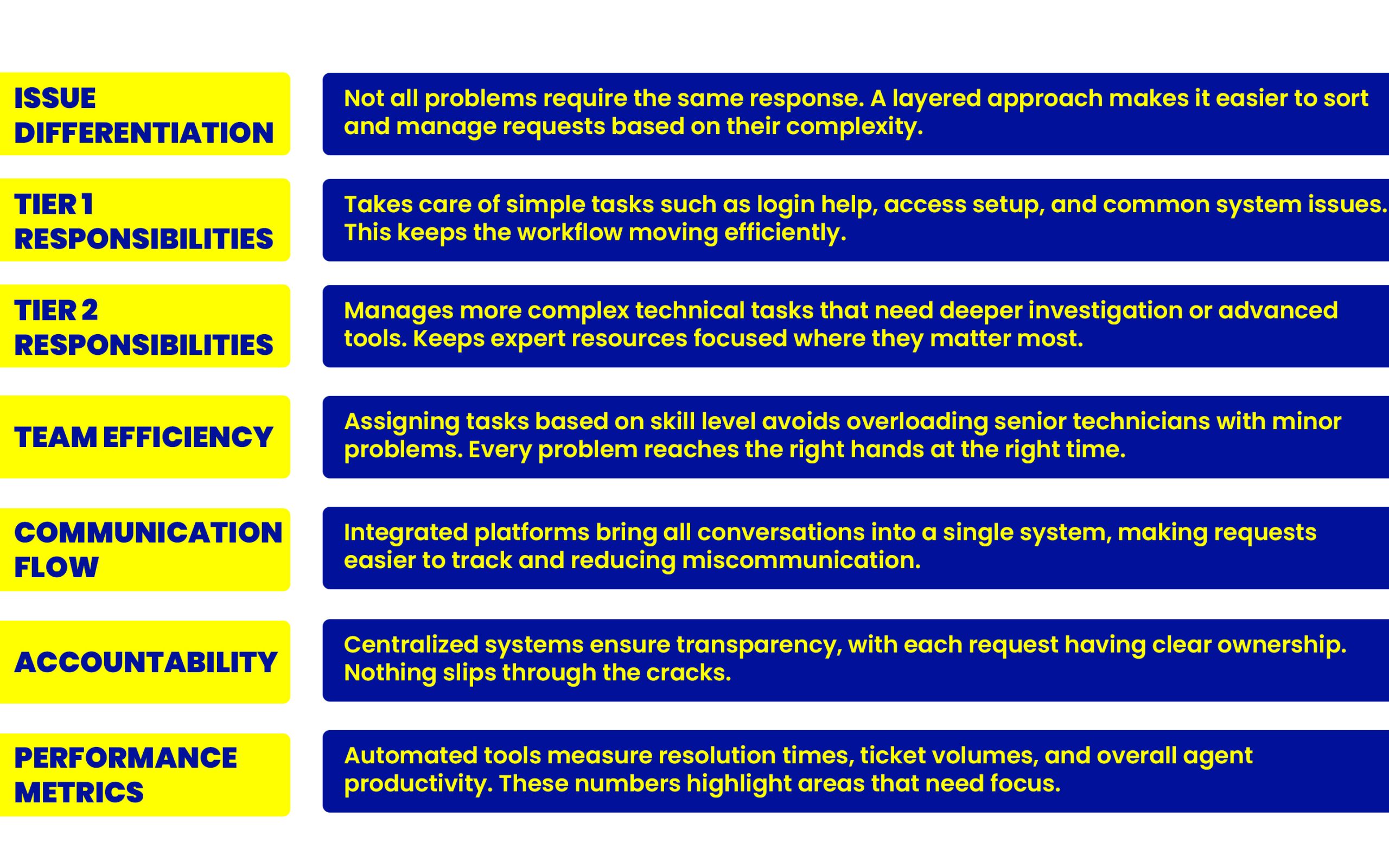How helpdesk services improve customer satisfaction and internal productivity

How helpdesk support keeps tech issues under control
IT issues start small, like a blank screen or a lost password, and work slows down. When this repeats across departments, it leads to lost time, which the employees consider a waste of time caused by anger and unhappy customers. The answer is not in patch applications or hurried IT solutions. The answer lies in structured, responsive helpdesk services designed to catch problems early and resolve them fast. With the right helpdesk support services, businesses can regain their rhythm, and both internal teams and clients can feel the difference.
A Well-designed helpdesk means faster support and happier clients
Fast, accurate support is expected, not optional. It’s expected. The current helpdesk services are based on thorough ticketing systems that display who complained about something, when it occurred, what was already attempted and what remains to be done. Agents do not need to guess. They also have some routes to follow and that reduces queuing periods. That sounds like respect for the client. They value time, and it shows. Add automation, like chatbots that handle simple requests, and then even small problems do not require human intervention. Tickets, which took a day, are closed now within hours, or less.
Several channels, email, web, chat channels, and even those of social channels are brought into a single area where nothing is overlooked or delayed. Clients do not need to repeat their concerns to various individuals. Every conversation builds on the last one. This will make it easier to flow and the client will feel listened to and understood. It is all driven by helpdesk services that are designed for real-time, better routing, and follow-ups.
Centralized support helps teams stay focused and avoid delays
It is not only the customers who gain. Teams that work inside the organization are more productive when they do not have to face difficulties alone. An efficient helpdesk service brings every request together under one system. Workers will cease trying to refresh or send duplicate emails to five different parties in the company. They would rather submit a single understandable request and keep track of it. Such transparency is the only thing that enhances morale. Everyone is aware of what each should be doing, and there is less unnecessary work and misunderstanding.
Departments start collaborating instead of working in isolation. Duties are properly allocated, and progress can be tracked, which makes the tasks get done quicker. That’s the difference a reliable helpdesk services framework can bring.
Fixing the problem early keeps things on track
Instead of problems accumulating, powerful helpdesk systems will detect indications before they become serious issues. Smart tools and dashboards that trace patterns, identify issues and flag weaknesses before they turn into actual problems are now used by many of the best helpdesk services. In case of lagging or recurring crashing of a software on a server, the helpdesk already anticipates it and remedies the situation before things get out of hand.
Certain platforms go further and provide auto-suggestions for previous tickets. That makes support representatives work much quicker and reduces the time of repair. Addressing issues on a first-hand basis keeps companies under control and ensures that they do not have to scramble to complete tasks when one issue leads to another.
Layered helpdesk support model overview
Aspect | Details |
Issue differentiation | Not all problems require the same response. A layered approach makes it easier to sort and manage requests based on their complexity. |
Tier 1 responsibilities | Takes care of simple tasks such as login help, access setup, and common system issues. This keeps the workflow moving efficiently. |
Tier 2 responsibilities | Manages more complex technical tasks that need deeper investigation or advanced tools. Keeps expert resources focused where they matter most. |
Team efficiency | Assigning tasks based on skill level avoids overloading senior technicians with minor problems. Every problem reaches the right hands at the right time. |
Communication flow | Integrated platforms bring all conversations into a single system, making requests easier to track and reducing miscommunication. |
Accountability | Centralized systems ensure transparency, with each request having clear ownership. Nothing slips through the cracks. |
Performance metrics | Automated tools measure resolution times, ticket volumes, and overall agent productivity. These numbers highlight areas that need focus. |
Improvement cycle | Real-time data helps the support team improve steadily over time. Better service leads to stronger satisfaction and more consistent results. |
 Real value delivered by Shivohm
Real value delivered by Shivohm
For businesses aiming to shift from ongoing tech slowdowns to lasting improvements, Shivohm offers a thoughtful approach to helpdesk services that prioritizes real-world results. With a focus on scalable systems, adaptive tools, and service that understands daily challenges, support becomes more than just a technical solution. Helpdesk structures are designed around live ticketing, automation, and insight-driven responses that bring consistency and speed into everyday operations.
Each part of the support framework works together. Knowledge bases are built with clarity, tiered ticketing models are integrated smoothly, and communication stays organized from start to finish. These elements reduce delays and help teams maintain flow without getting caught in repetitive issues.
Strong helpdesk services do more than fix what is broken. They bring order where things were scattered and create space for teams to move with less resistance. With responsive systems and well-timed assistance, support turns into a quiet strength behind steady progress. What once slowed work down becomes something that keeps everything moving forward.
